 Leida Visee
Leida Visee
Caring for your canine
Let’s work on your dog’s future
Leida Visee
Caring for your canine
Let’s work on your dog’s future
I help keep your aging dog healthy
Your dog… Your buddy, best friend, full member of the family, confidant. Always happy when you get back after being away, no matter how short or long.
Our beloved friends are completely dependent on us for many things: attention and love, food, exercise, a safe place, medical care. And we give that care with love!
When caring for our dog’s well-being, it is not always easy to know the right thing to do and how to make the best choices. Especially as our beloved companion begins to age, and some things are no longer as natural as they once were.

This is where I can help
Over the past 30 years, I have guided many dogs and their humans through the second half of a dog’s life. As a veterinarian, and for the past 20 years mainly using complementary treatment methods such as acupuncture, chiropractic, herbs, flower essences and essential oils. I have witnessed how much we can do ourselves, at home, to make that second half as wonderful as possible. How we can achieve the greatest quality of life for the longest possible time, maintain muscle strength and mobility, preserve resilience and zest for life.
In addition, having lived through this process myself several times with my own dogs, I know firsthand how beautiful and how difficult it can be.
I have now compiled that experience and knowledge into an online course, “Super Senior: the Gold in the Gray.”
My offer
Don’t want to miss a thing?
If you want to stay up-to-date with the latest news around course availability and new programs, sign up for the Silver Snouts Newsletter here!
We will send updates regarding the latest developments, ideas and offers straight to your inbox!

Super Senior: The Gold in the Gray
The Caring For Your Canine Academy was created to help your dog age in the healthiest way possible.
When we ask owners what they consider most important for their dog, these three aspects always come up:
Being pain-free
Getting exercise/ maintaining muscle strength
Quality of life
In this course we will cover these in detail. We will discuss how to recognize the very first subtle signs that pain may be present, and what you as the owner can do about it (hint: a lot more than you think!).
In the module on movement we will delve into how to observe and recognize more signs of discomfort in your dog, what is attainable with simple bodywork techniques, and we will discuss various muscle strength exercises in a playful, understandable way.
We will cover eyesight and hearing, and how we can improve quality of life when they start to decline. We will also examine methods and ideas for keeping life fun and interesting for your dog.
Using a holistic approach, we will explore how all of this is connected, how one element reinforces another, and how we can utilize this reality. You will learn to read, understand and help your dog even better, and you will do it together! This teamwork builds confidence and strengthens the bond between you and your dog even more.
Senior dogs:
The healthy aging checklist
Your senior dog deserves the very best!
As our dogs age, like us humans, they need more care and attention to stay healthy and happy.
That is why it is important to take extra measures to help our faithful friends as they age.
Access your free checklist here with 5 things every dog owner should know to make sure their older buddy stays as comfortable and healthy as possible!
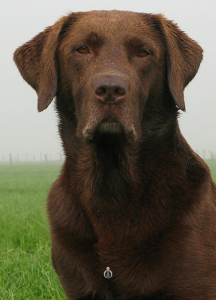
Happy canines

What is enrichment?
Enrichment is, simply put: making life more challenging and less boring. Older dogs often have to miss out more and more on fun things because moving isn’t as easy anymore, walking and exercising become more difficult, and/ or because ears and eyes gradually begin to fail. We can help by providing stimulating activities that the dog is still able to do. And that amazing dog nose is usually as strong as ever!
An example of an activity which is usually pretty easy to do is hiding treats/ kibble in a cardboard box. You can create endless variations on this! Start easy with an open, empty box and show your dog that you are sprinkling some treats in there. And then it’s snack time! Then gradually you can increase the challenge by closing the box a bit or by putting crumpled paper balls in the box for the dog to dig through. Build up the difficulty level slowly and make sure the dog continues to be successful in finding the treats. Destroying the box at the end of the game can also be part of the fun!
This is just a very simple example – there are so many more possibilities. The course covers them in detail!
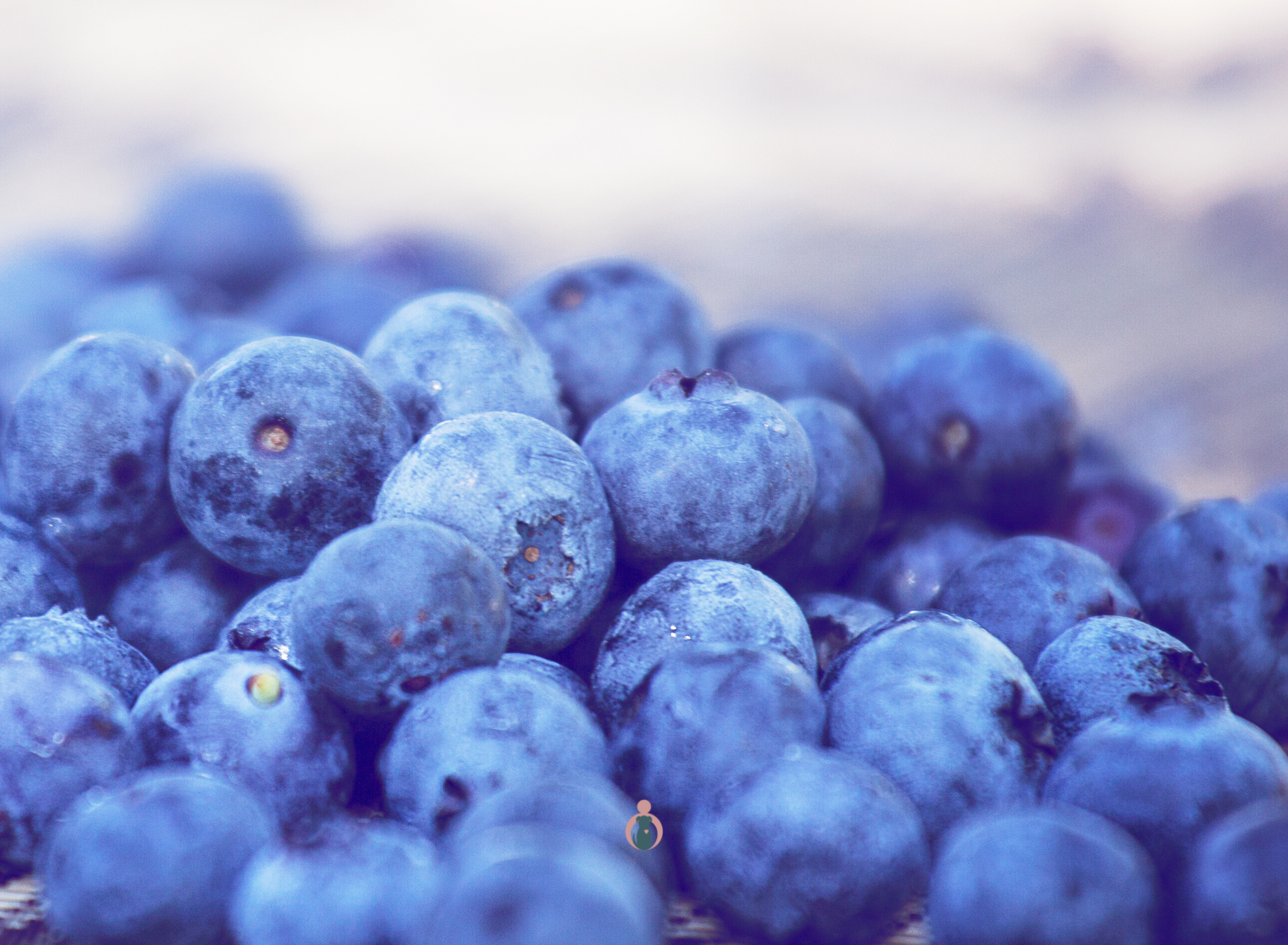
Fruit
Did you know that blueberries are one of the top antioxidant foods? Wild blueberries in particular are packed with nutrients that we, as well as our dogs, desperately need.
Antioxidants are substances that help neutralize harmful molecules called free radicals. Free radicals enter the body through for example metabolism, but also through exposure to pollution and so on. Too many free radicals in the body can contribute to serious diseases such as cancer and intestinal problems.
Antioxidants can help prevent or reduce these harmful effects. They also strengthen the immune system and can slow down the aging process.
Most dogs tolerate blueberries well, and many dogs love them. If your dog won’t eat them out of your hand, you can simply add them to his food, mashing them up a bit if necessary.
Pro tip: buy frozen blueberries, which is much cheaper and more practical than fresh blueberries. Your dog won’t notice.
Giving blueberries is just one of the many ways we can use nutrition to support the older dog. In the course we will explore this in detail!
! If your dog suffers from food allergies, or has a serious intestinal condition, please first consult with your veterinarian whether blueberries are okay to give to your dog.
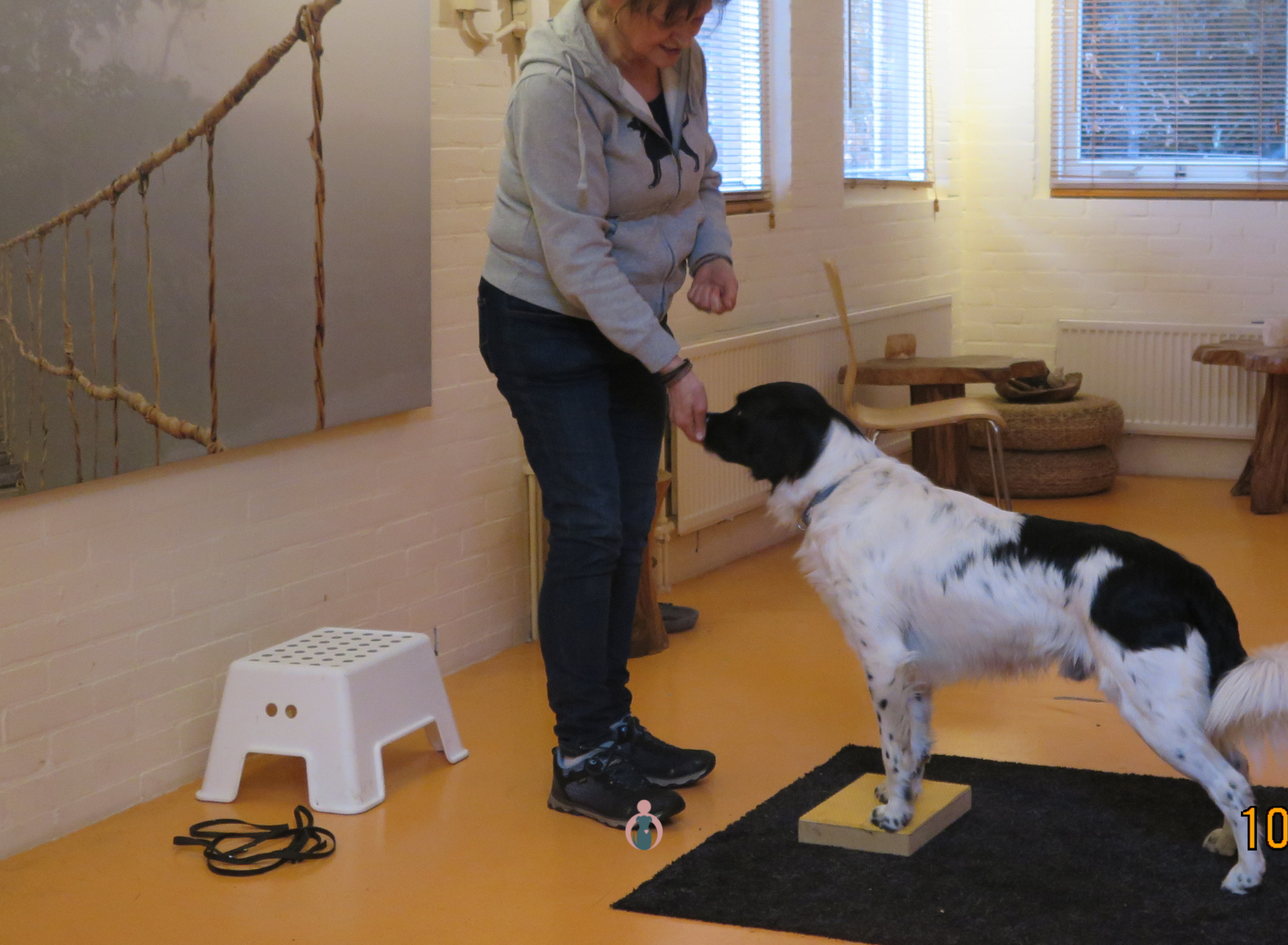
Use it so you don’t lose it
Older dogs often lose muscle strength, especially in the hindquarters. In the course we will discuss in detail different ways to maintain muscle strength for as long as possible, and even build it up again.
A simple exercise which almost any dog can perform, is to stand with the front paws on a small elevated target no higher than the dog’s wrist. This can be anything, depending on your dog’s size: a bathroom stool, a shelf, a book. As long as it is sturdy and not slippery. Your dog should not be able to slip on this target, and the target itself should not be able to slide along the ground. You can always start at a low level and make it higher later.
Put your target, between you and your dog, and see if he is willing to put his front paw on the target in exchange for a treat. If he finds this a bit stressful, you can first let him get used to the target by putting the treat on it and letting him eat the treat off it. This will usually work just fine. Above all, don’t rush, build up slowly until he no longer finds the target scary. And when he does put his paws on it, the treat is the reward – and praise him for doing well, of course!
Next, let your dog stand with his front paws on the target for a few seconds, and then gently coax him away from it with a treat. Don’t let him make any wild jumps! The weight shift puts the hind legs and back muscles to work.
If your dog can do this easily, you can also move the treat a little to the left and right while he is standing with his paws on the target, which will engage the abdominal muscles as well.
Happy client
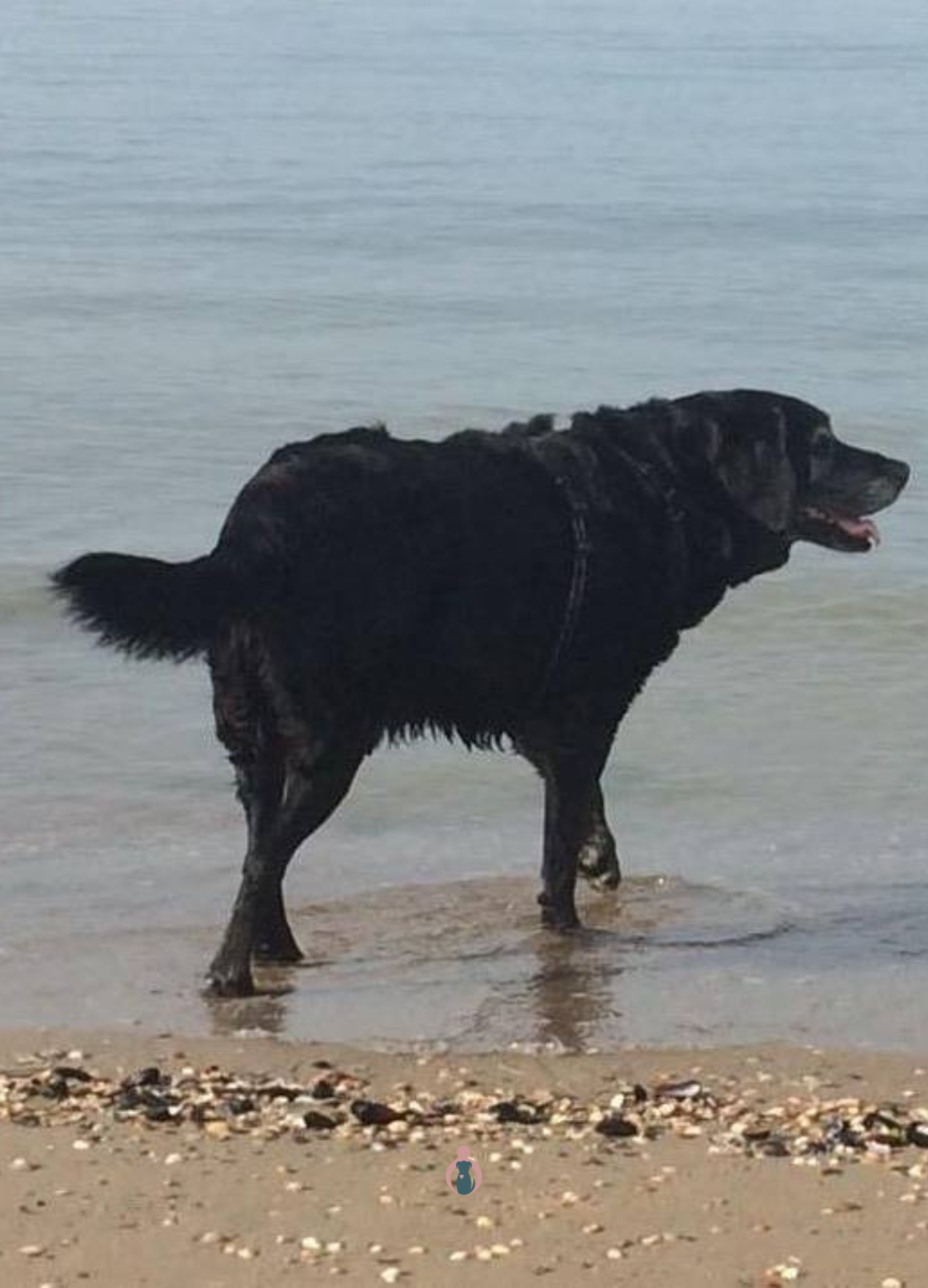
I have had several senior dogs in my life that have been expertly treated by Leida. Currently I have another senior dog, Buddy, and he too receives expert care from Leida.
Leida is very kind and my dogs feel very comfortable with her. She radiates calm and is also very involved with the dogs.
It is very important to Leida that the focus is on quality of life and she looks for the most appropriate treatment for the dog. This means that the treatment of one senior dog may be different from another senior dog.
Since quality of life is paramount to Leida, she gives tips and tricks to work with at home. This is a valuable addition to her treatments. Moreover, it is lovely to actually be able to do something yourself for the well-being of your buddy.
Leida also taught me something very important about my dogs. I used to think in terms of ‘diagnoses’, but Leida taught me to think and observe differently: not to think in terms of diagnoses but of possibilities, and see what is still achievable.
Leida has a range of treatment methods:
- Acupuncture
- Chiropractic
- Medication and supplements
- Nutritional advice
- Essential oils
Needless to say, everything about Leida’s practice is aimed at improving the senior dog’s quality of life.
Lianne
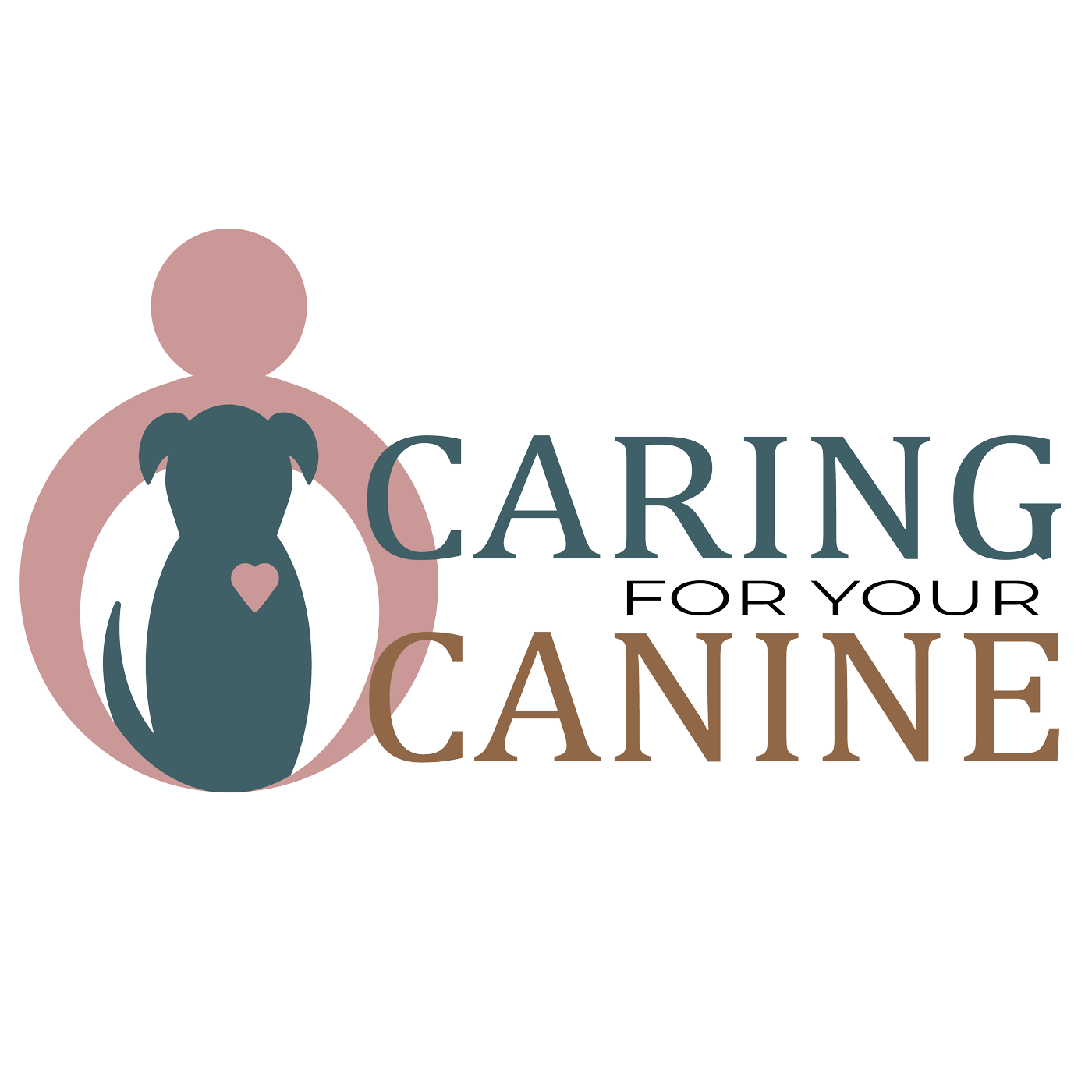
 Want to receive 5 tips for your senior dog in advance?
Want to receive 5 tips for your senior dog in advance?